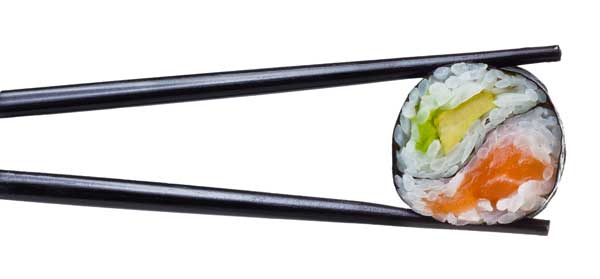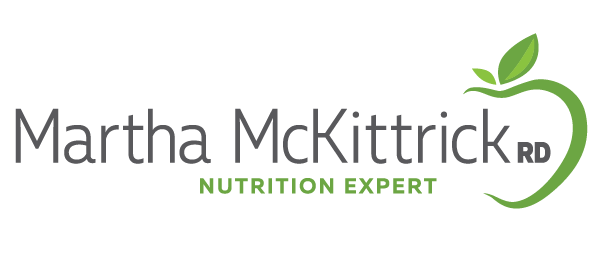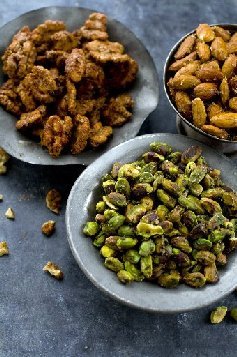“Healthy” Food That Can Pack on the Pounds
You think you’re doing most of the right things when it comes to exercise and diet, so why isn’t the scale budging? One reason could be stealth calories in foods we think are healthy. While they might be legitimately nutritious, some of these calorie-dense foods could be hindering even your best efforts at shedding those extra pounds …
1. Almonds. The quintessential health food, almonds are recommended by virtually every diet plan. And for good reason: They’re all-natural, packed with heart-healthy monounsaturated fats, antioxidants and a bit of fiber. Plus they’re portable.
A serving of plain, raw almonds has about 163 calories, and 14 grams of fat (roasted almonds are about the same). But that’s for a single ounce. Grab a few handfuls and you can quickly reach a cup’s worth, along with more than 800 calories and 70 grams of fat.
All types of nuts and seeds and most types of trail mix can be just as high in calories. The whole idea behind trail mix is that it packs a lot of calories into a very small space, making it an easy to carry calorie-dense food. In your backpack. While you’re hiking the trails.
*A better bet: Keep portions in check by dividing nuts into 1-ounce servings (about 23 almonds) after you buy them in bulk. Too time-consuming? Spend the extra money for the single-serving 1-ounce or 100-calorie packets of nuts so that you’ll have a heart-smart snack that’s also figure-friendly.
2. Quinoa. Touted as a wonder-grain because of its protein, fiber and iron content, quinoa is quickly becoming a  mealtime staple even for those who typically have watched their intake of other starchy carbs. But with 220 calories and 40 grams of carbohydrate in every cup, quinoa is every bit as calorie dense as rice or pasta. (pic: foodnetwork.com)
mealtime staple even for those who typically have watched their intake of other starchy carbs. But with 220 calories and 40 grams of carbohydrate in every cup, quinoa is every bit as calorie dense as rice or pasta. (pic: foodnetwork.com)
*A better bet: If you’re watching calories, opt for a non-starchy veggie as your side dish. Sauteed spinach, for example, has just 40 calories per cup and more than twice the iron content of the same amount of quinoa. And for a low-calorie meatless protein option, you’re better off with Boca’s Original Vegan Burger for just 100 calories and more than twice the protein of a cup of quinoa.
3. Protein bars. They’re a quick, portable protein-rich snack, but protein bars can also be calorie-dense. The Think Thin bar is my favorite because it has 20 grams of protein, zero sugar and nothing artificial. But with 240 calories per bar, it’s almost as high-cal as a Snicker’s. And other bars can be as high as 390 calories — about what you’d get in six mini powdered donuts or eight Chips Ahoy cookies.
*A better bet: A protein bar is fine in a pinch as a grab-and-go snack, but they’re not a “freebie” — we still need to factor those calories in just like we would for any other meal or snack.
4. Dried fruit. Depending on the variety, a cup of dried fruit is packed with 300 to 500 calories and 65 to 100 grams of sugar. Although dried fruit provides some fiber, along with a boost of vitamins, minerals and antioxidants, that doesn’t change the fact that every cup has the equivalent of 16 to 24 sugar packets. And with loads of sugary carbs and trace amounts of protein and fat, snacking on handfuls of dried fruit can leave you ravenous again in no time.
*A better bet: Reach for fresh fruit instead. Its high water content means fewer calories and less sugar, ranging from about 45-100 calories and 9-23 grams of sugar per cup.
5. Hummus. It’s nutritious – after all, hummus is essentially chickpeas and olive oil – but it’s also calorie-dense, with about 280 calories and 24 grams of fat per half-cup serving (about what fits into a single cupcake wrapper). If you’re using just a couple of tablespoons, it’s about 70 calories or less ” no problem. But how much are you really scooping onto those pita chips? (More on those later).
*A better bet: If you have trouble controlling how much you’re dipping, consider using hummus as a sandwich spread.  You’ll get the flavor you’re craving, without all of the calories. If you’re looking for a lower-cal dip, you’re always safe with salsa, or use low-fat plain Greek yogurt in place of mayo or sour cream to make a creamy dip with less than 100 calories per half-cup serving (and the added benefit of 10 to 12 grams of protein). (pic: mccormick.com)
You’ll get the flavor you’re craving, without all of the calories. If you’re looking for a lower-cal dip, you’re always safe with salsa, or use low-fat plain Greek yogurt in place of mayo or sour cream to make a creamy dip with less than 100 calories per half-cup serving (and the added benefit of 10 to 12 grams of protein). (pic: mccormick.com)
6. Pita chips. Ah, the other half of the seemingly perfect snack combo. But here’s the thing: Pita chips are marketed as a diet-friendly option, but most brands ” even those marketed as “naked” or “multigrain” pita chips ” aren’t much more than white bread, with “enriched wheat flour” listed as the first ingredient. And just a couple of handfuls of pita chips can set you back about 260 calories and 10 grams of fat ” with minimal amounts of belly-filling fiber.
*A better bet: Athenos is the only brand of pita chips sold in regular grocery stores in the New Orleans area that offers a pita chip with more whole wheat flour than white. Careful, though: You’ll still get 120 calories every 11-chip handful, so it’s still essential to keep portions in check.
7. Fruit smoothies. Sound like the perfect answer to losing weight or to just being healthier: Skip lunch and have a fruit smoothie instead, or sip on one for an afternoon snack. Here’s the problem, though ” smoothies are often loaded with sugar, with little or no protein, fiber or fat to keep you feeling full for long. Even smoothies shops that incorporate real, whole fruit often add juice blends (providing natural fruit sugars, but no fiber), as well as other high-sugar ingredients like lemonade, sherbet, honey and turbinado (translation: raw sugar). Jamba Juice’s large Razzmatazz smoothie, for example, has 520 calories and 100 grams of sugar, thanks in part to its berry juice blend and orange sherbet. And Smoothie King’s Angel Food smoothie sounds innocent enough, but order a large and you’ll get 708 calories and 150 grams of sugar (the smaller 20-ounce size has 75 grams of sugar). Some of the sugar is from whole fruit, though it also contains turbinado and honey.
*A better bet: Jamba Juice offers Jamba Light smoothies, ranging from 140-160 calories and 24-30 grams of sugar for  a 16 ounce drink. They have only 5-6 grams of protein, though, so add a boost of soy or whey protein for another 8-10 grams of protein (double or triple that if it’s going to replace a meal). At Smoothie King, you can ask to make a smoothie “skinny”‘ by leaving out the turbinado. But many still don’t have nearly enough protein to keep you full for long, so my favorite option at Smoothie King is the High Protein Smoothie (in almond mocha or chocolate), sans the turbinado. Don’t be alarmed by the fact that it’s listed in the “Build Up” category — a 20-ounce has just 266 calories, 14 grams of sugar and 30 grams of protein. Or, you can save calories, added sugars and cash by blending your own fruit smoothie with real fruit (fresh or frozen), plus a source of protein (like protein powder or Greek yogurt), along with any add-ins such as vanilla extract, nut butter or ground flaxseed. (pic: www.sipsmart.net/
a 16 ounce drink. They have only 5-6 grams of protein, though, so add a boost of soy or whey protein for another 8-10 grams of protein (double or triple that if it’s going to replace a meal). At Smoothie King, you can ask to make a smoothie “skinny”‘ by leaving out the turbinado. But many still don’t have nearly enough protein to keep you full for long, so my favorite option at Smoothie King is the High Protein Smoothie (in almond mocha or chocolate), sans the turbinado. Don’t be alarmed by the fact that it’s listed in the “Build Up” category — a 20-ounce has just 266 calories, 14 grams of sugar and 30 grams of protein. Or, you can save calories, added sugars and cash by blending your own fruit smoothie with real fruit (fresh or frozen), plus a source of protein (like protein powder or Greek yogurt), along with any add-ins such as vanilla extract, nut butter or ground flaxseed. (pic: www.sipsmart.net/
8. Fruit juices. Like smoothies, fruit juices are loaded with sugary calories. Yes, even 100 percent, freshly made juices, ounce-for-ounce, typically have more sugar than a regular soft drink. They’re naturally occurring fruit sugars, which means we also get the benefit of the fruit’s nutrients, but ” natural or not ” calories from sugary drinks don’t fill us up like the calories that we eat. And while you may already be steering clear of “regular” juices like orange juice or apple juice because of the high sugar content, other juices often escape such label scrutiny, particularly those juices that tout some form of superfruit on the label (think pomegranate, blueberry or cherry). The same goes for trendy bottled juices like Odwalla and Naked Juice. At least all of Naked Juice’s products ” and most of Odwalla’s ” are 100 percent juice blends with no added sugar. But they still pack as much as 60-70 grams of sugar ” and 300-plus calories ” into a single bottle.
A better bet: Eat the whole fruit instead. You’ll still get the vitamins, minerals and antioxidants, plus you’ll reap the benefits of fruits’ belly-filling fiber.
9. Salads. I recently wrote about restaurant salad shockers, with seemingly diet-friendly salads that can top 1,400 calories. But it’s worth mentioning again, since the same thing can happen at home if you’re not careful with high-cal add-ins like cheese, bacon and salad dressing, and even the better-for-you fats like nuts, avocado and olive oil.
A better bet: Keep it simple. Start with a base of leafy greens and add loads of veggies. Top that with a lean protein, go with a single higher-calorie add-in, and use light vinaigrette or just a small amount of your favorite salad dressing. The result is a salad with (an appropriate) 200 to 500 calories.
10. Wraps. They were also a recent column topic, but I get questions about them from clients on practically a daily basis. So here’s a summary of the deal with wraps: Most restaurant-style wraps are 240 to 300 calories ” and that’s just for the wrap, before adding a single filling. So it’s a real challenge to order a wrap for less than 600 to 800 calories, no matter how specific you are when ordering.
*A better bet: Skip the wrap altogether. Order a sliced bread sandwich instead, and you’ll save at least 150 calories and half the carbs. If you’re really craving a wrap, try eating half, and then eat just the lean protein and veggies from the other half. We’re not saying that any of these foods are bad ” in fact, most of them can be quite nutritious. But for those watching their waistlines, just keep in mind that these foods are all calorie-dense, so it’s more important than ever to keep portions in check.
 American Dietetic Association. She manages the nutrition program at Ochsner’s Elmwood Fitness Center in New Orleans, advising clients in reducing body fat, building lean muscle, endurance training, disordered eating, and general health and wellness.
American Dietetic Association. She manages the nutrition program at Ochsner’s Elmwood Fitness Center in New Orleans, advising clients in reducing body fat, building lean muscle, endurance training, disordered eating, and general health and wellness.
RELATED POSTS
Sorry, we couldn't find any posts. Please try a different search.
MEET MARTHA
I especially love problem-solving, whether it’s helping women defeat issues plaguing them for years, helping a busy executive find practical ways to get heart healthy, or providing tips to help you reverse diabetes. That’s why I’m on a constant quest to expand my knowledge by staying on top of the latest research.

20 Ways To Eat Out 550 Calories or Less!
No time to cook? We’ve got you covered. Here are 20 healthy meals from a variety of cuisines that won’t pack on the pounds. Most of them also have less than 30 grams of carbs.
Subscribe to my newsletter and get this free download.


